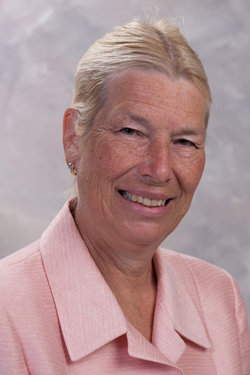
A growing pipeline of new physicians is essential to address a critical shortage.
The Association of American Medical Colleges (AAMC) reports an escalating shortage of physicians, particularly in certain disciplines, despite the increasing delivery of healthcare by teams of providers of different backgrounds. This physician shortage is particularly acute in central Illinois, especially in our rural communities. Both of UICOMP’s major academic clinical partners, UnityPoint Health and OSF HealthCare, view the physician shortage and the challenge of physician recruitment as sources of major concern.
Why is this shortage occurring? Nationally and in Illinois, nearly one third of all active physicians are age 60 or older. The supply of new graduates is simply not keeping up with physician retirements, the rising demand created by new drug therapies, and the increasing number of patients living to older ages with chronic diseases. In addition, the literature reports rising levels of physician burnout. As physicians strive for a measure of work-life balance, some are working fewer hours than their predecessors.
UICOMP provides a bright side for central Illinois, as physicians tend to practice in the communities where they complete medical school or residency. The AAMC report notes:
- 46.6 percent of physicians who graduated from a public medical school were active in the same state.
- 47.5 percent of physicians were active in the state where they completed their most recent graduate medical education program.
- 67.1 percent of physicians who completed medical school and their graduate medical education in the same state remained in that state to practice.
UICOMP’s medical students and residents are the future physicians of central Illinois. We already provide a pipeline of physicians, with about 60 percent of area primary care physicians being graduates of the University of Illinois System for medical school or residency. And we are expanding to have an even larger impact.
Over the last 10 years, the number of residents and fellows has grown by 50 percent. This equates to training about 100 additional physicians each year. Working with our major academic affiliate hospitals, OSF HealthCare and UnityPoint Health, we have added new residencies and fellowships. We are already seeing the benefits of this expansion, as some graduates of these new residencies and fellowships are staying in our community after completing their training. In 2019, we expect to start a new transitional year residency as well as a point-of-care ultrasound fellowship.
Importantly, the presence of residents and fellows in Peoria also helps attract physicians who received their training somewhere else. The academic opportunities and the appeal of working with residents and fellows makes Peoria a more attractive place for them to practice.
At the medical student level, we have also expanded—not only adding an entire M1 class in the fall of 2017, but expanding the number of students per class. We’ve changed our educational programming as we strive to meet the needs of both our students and our communities. We’ve enhanced the emphasis on our Rural Student Physician Program (RSPP) and initiated an Innovations in Rural Global Medicine (IRG-Med) track in collaboration with Jump. Both have the goal of increasing student exposure to rural practice in hopes that they will choose to practice in a smaller community.
We are committed to securing the future of healthcare in Illinois by further strengthening our educational and training programs. iBi
Dr. Sara Rusch is regional dean of the University of Illinois College of Medicine Peoria.

